The Maryhill Museum located near Goldendale, Washington, has a display of Plateau containers. The Plateau Culture Area is the area between the Cascade Mountains and the Rocky Mountains in Washington, Oregon, Idaho, British Columbia, and Western Montana. From north to south it runs from the Fraser River in the north to the Blue Mountains in the south. Much of the area is classified as semi-arid. Part of it is mountainous with pine forests in the higher elevations.
While much of the Plateau Culture Area constitutes a dry region characterized by a sagebrush-Juniper steppe area with pine forests at the higher levels, there are portions of the area which do not fit this description. In the northern portion of the Plateau Culture Area, there is a temperate rainforest with higher precipitation.
The Indian peoples of the Plateau made and used several kinds of containers.
Baskets
The Plateau tribes made a wide variety of different kinds of baskets. Baskets were often a trade item. In her chapter in Woven History: Native American Basketry, Mary Dodds Schlick writes:
“The Native people of the Columbia Plateau are rich in basketmaking tradition. For thousands of years their ancestors have used the roots, bark and grasses of the region to fashion containers for all their needs. Today a small number of descendants of these basketmakers continue this ancient heritage, an art form known worldwide for fine craftsmanship, variety in design, and beauty.”
In their entry on Plateau basketry in the Handbook of North American Indians, Richard Conn and Mary Dodds Schlick write:
“Basketry is surely one of the most significant, and least appreciated, creative and technological achievements of the world’s peoples. Unlike the more-esteemed potters or beadworkers, basketmakers must create the basic form while simultaneously planning and placing the decoration correctly.”
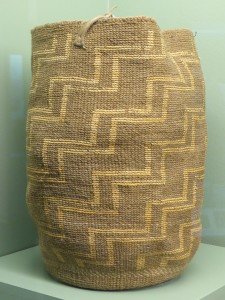
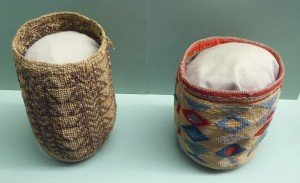
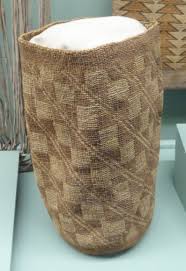
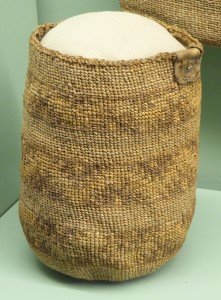
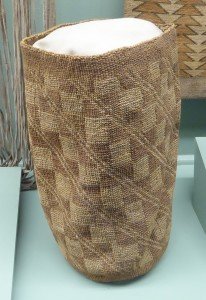
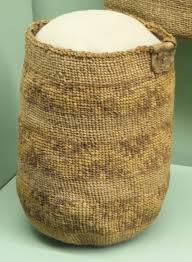
Round twined bags, such as those shown above, were used in gathering and storing roots and other foods. These bags varied greatly in size and the designs which decorate them range from simple bands to complex geometric patterns.
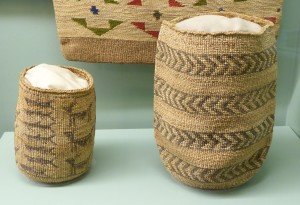
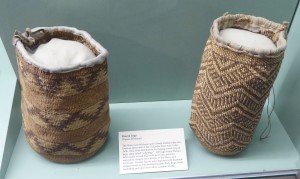
The round bags shown above are Wasco-Wishxam, two closely related tribes who lived on either side of the Columbia River near Celilo Falls. Naturalistic designs were unique to the Wasco and Wishxam.
Bark Baskets
To make bark baskets, cedar bark was peeled from the tree in large sheets. The bark was then scored and folded and then stitched along the sides. The top was reinforced by a wooden ring. This type of basket was often made and used while berry picking and were often considered to be temporary containers.
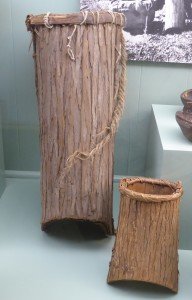
Ch’láy Basket
According to the Museum display:
“The baskets are woven from tules and they were once made to be disposable containers for the storage of ch’láy (salmon flour or salmon sugar). Historically, baskets such as this one were lined on their bottom and sides with salmon skins. Salmon stored in this manner kept for an extended period of time and fully packed ch’láy baskets were common and desirable local trade items.”
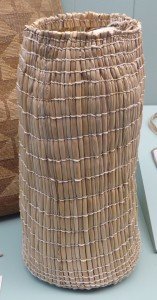
The basket shown above was made by Yakama artist Vivian Harrison.
Horn Bowls
According to the Museum display:
“Small bowls were made from mountain sheep horn. The horn was boiled or steamed to make it pliable and then allowed to dry over a mold to retain the shape. The rows of zigzags and upright rim projections with cut-out designs were characteristic of these bowls.”
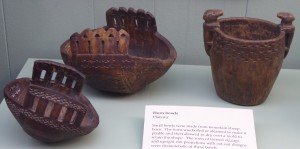
Wooden Containers
Wooden mortars were used in grinding roots, salmon, and other dried fruits.
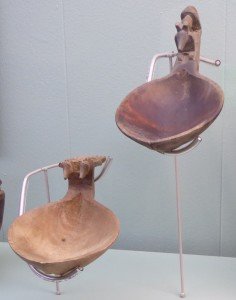
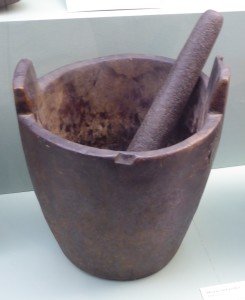
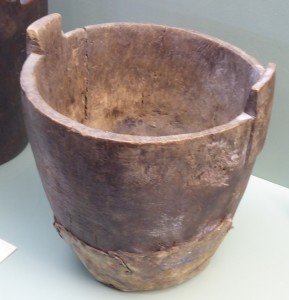
Shown above are wooden spoons which were used for food preparation and eating.
Parfeches
Throughout the Plateau, Plains, and Great Basin culture areas, Indian people used containers made of painted rawhide for storage. According to the Museum display:
“Rawhide which was folded while wet retained the typical envelope-shape sometimes called the ‘Indian suitcase.’ Designs were painted on the upper surface of the parfleche and differed from region to region.”
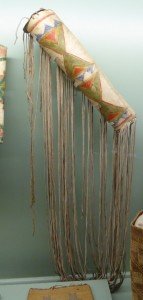
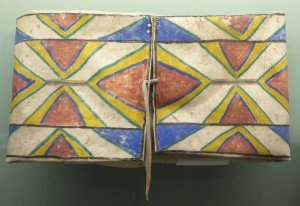
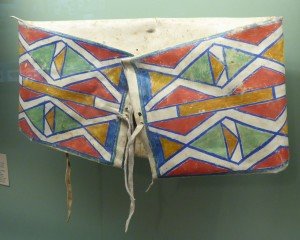
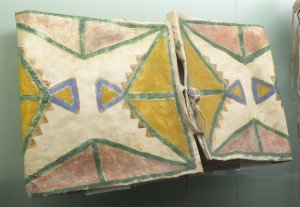
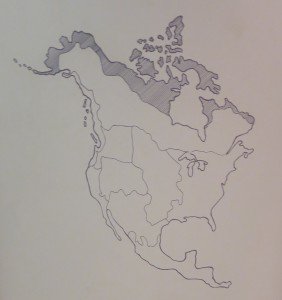
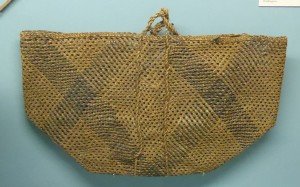
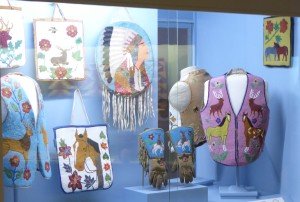
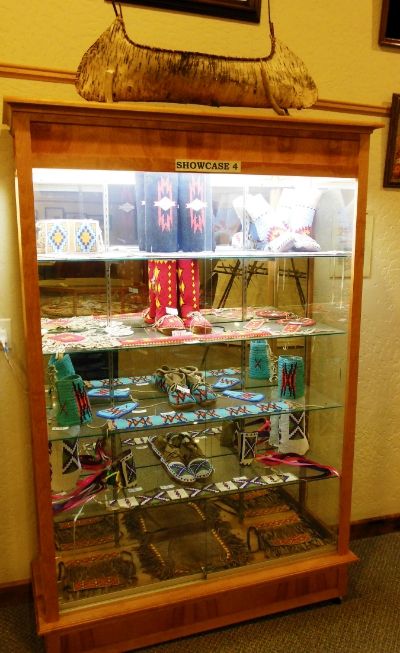
Leave a Reply